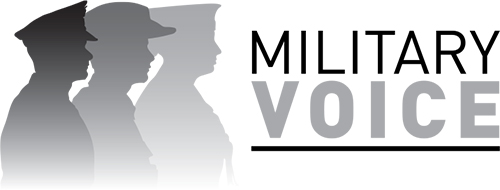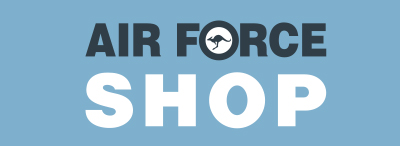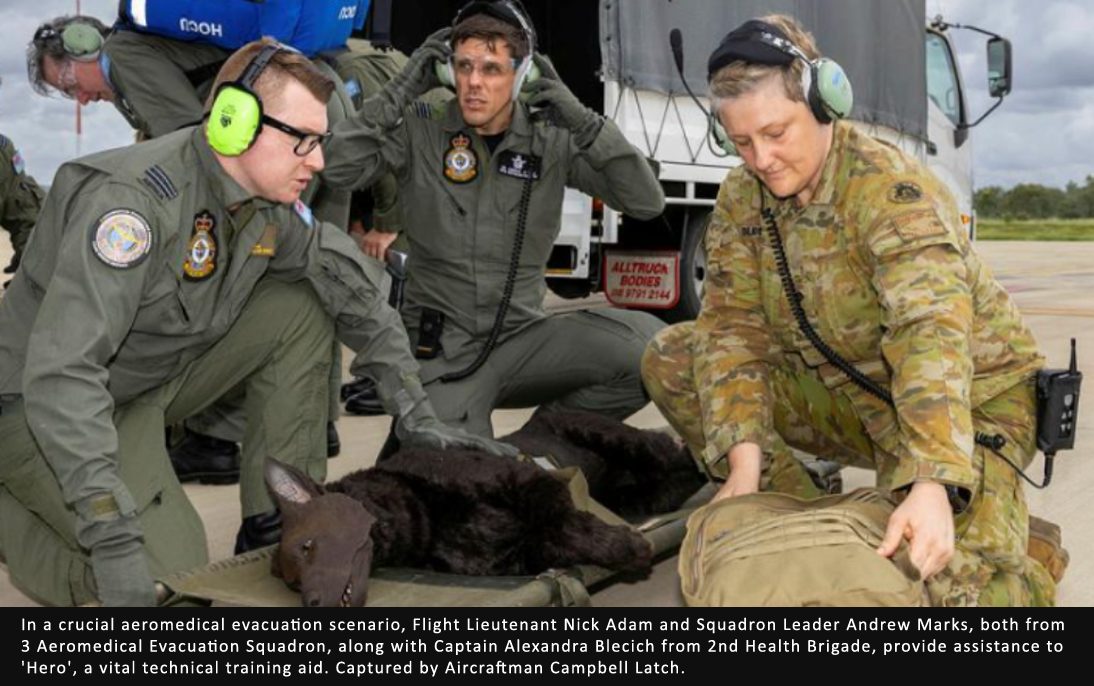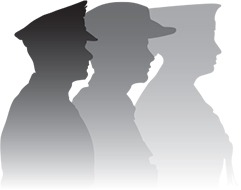Near the ramp of a C-17 Globemaster, a military working dog and two handlers lay still on stretchers, two of them injured by an Improvised Explosive Device (IED) blast. Meanwhile, RAAF personnel swiftly prepared them for aeromedical evacuation.
Among the casualties is 'Hero', a canine mannequin with a wounded leg, accompanied by two human mannequins—one intubated with severe head and chest injuries, the other recovering from a heart attack. Urgent evacuation with enroute critical care is imperative for all.
In this high-stakes scenario, clinical staff exert all efforts to provide necessary treatment with available resources. One such member is Captain Alexandra Blecich, a registered veterinarian employed at Headquarters 2nd Health Brigade. She assists in determining appropriate medication, anaesthesia management, and optimal positioning for the canine on the stretcher.
“We found the stretcher configurations were not suitable for a dog,” Captain Blecich said.
“The stretcher pole places pressure on an injured leg, prompting us to improvise with a worktable padded with a mat.
“This solution eliminated the need for purchasing additional equipment.”
Drawing on her 12 years of veterinary experience, Captain Alexandra Blecich innovatively explored various human-sized blood-pressure cuff fittings, ranging from paediatric to infant sizes. This adaptation was crucial to accommodate the diverse range of Defence dogs, from kelpies to German shepherds.
As a seasoned veterinarian, Captain Blecich provided expert guidance to medical personnel, many of whom lacked prior experience with canines. She skilfully directed them through essential tasks such as pain relief, induction and intubation management, anaesthesia maintenance, and injury stabilisation. Her expertise proved invaluable in ensuring the effective care and treatment of the injured animals.
“The mannequin is a great training aid to rehearse on. If you don’t fit the canine-specific tourniquet correctly, the dog will continue to bleed,” Captain Blecich said.
During the scenario, Air Force health specialists had the opportunity to determine the optimal positioning for the dog within the aircraft, including whether its nose or tail should face forward, and whether its legs should face inboard or outboard in the litter bay.
Captain Blecich made history as the first veterinarian officer to take part in a military critical care aeromedical evacuation team (MCAT) scenario at RAAF Base Amberley. Collaborating with personnel from the Health Operational Conversion Unit and 3 Aeromedical Medical Evacuation Squadron, she brought her expertise to enhance the team's capabilities.
Group Captain David Cooksley, Clinical Director for Emergency and Aeromedical Evacuation at Headquarters Health Reserves Branch, invited Captain Blecich to observe the MCAT course, recognising her valuable insights and contributions to the field.
During her inaugural flight aboard an Air Force aircraft, Captain Blecich gained invaluable insight into the aeromedical evacuation environment, ensuring the safe and effective care of ill or injured canines.
Group Captain Cooksley's interest in pre-veterinary treatment and transport of injured canines was sparked during his training with the United Kingdom military medical emergency response team in 2013. It was during this time that he discovered the expectation for clinicians to provide care and transport for injured dogs on the battlefield.
“This surprised me, as my understanding of dogs was limited to knowing they should have a wet nose and a wagging tail,” Group Captain Cooksley said.
“I was inspired to learn how to care for dogs as a human healthcare provider and start developing our military working dog pre-veterinary care and aeromedical evacuation capability.
“These are valuable serving members, and we have a legal and moral responsibility to provide them appropriate medical support.”
He emphasised that the presence of an Army veterinarian training alongside the Air Force in evacuation heightened awareness significantly.
“In the past, we depended on our coalition partners, who have a veterinary corps,” Captain Blecich said.
“We may not always have access to them in all the locations where we are deployed, which is why we need a backup plan when caring for our military working dogs.”
Are you looking for ways to honour the brave animals who served in war? Explore the Purple Poppy Collection – from charming charms to sleek lapel pins and more, each piece celebrates their courage and your purchase helps us to donate to the AWAMO.
There's more! Explore the bond between handler and military working dog with our exclusive A Bond Forged Limited Edition Figurine. This stunning piece captures the trust and companionship between them, a bond forged in the heat of battle.

A Bond Forged Limited Edition Figurine from The Military Shop, Australia








Leave Comment